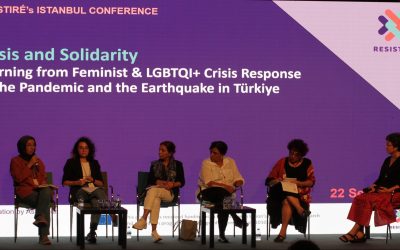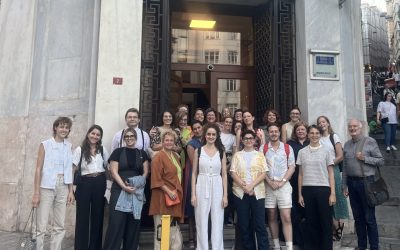Collecting evidence on ‘invisible’ inequalities
The aim of this report is to
- analyse the gender+ inequality dimensions and the impacts that policy and societal responses implemented in Europe as a response to COVID-19 have had on people,
- to give voice to those people and groups who may not have been heard in the public debate,
- to identify enablers and obstacles towards recovery, with a specific focus on four domains: gender-based violence, education, work and care; and with a specific focus on vulnerable groups, including: LGBTQI+, migrants, young people.
In total, 368 individuals shared their knowledge and experiences as activists and experts in civil society, public authorities and academia, and as individuals with lived experiences during COVID-19 across Europe. The data were collected via three pan-European workshops with inequality experts from civil society representing the voices of specific target groups, public authority experts and academics (n=38); semi-structured interviews with predominantly public authority experts and academics (n=24); and via individual narrative interviews with people from across Europe (n=306) and analysed using thematic analysis. The narrative interviews were conducted and analysed by the consortium partners and a network of 21 national researchers covering the EU27, Iceland, Serbia, Turkey, and the UK. In line with the theoretical and conceptual approach of RESISTIRÉ, the report builds on an intersectional approach to gender which acknowledges the mutual shaping of multiple complex inequalities.
An increase in inequalities, including forms of new inequalities
The overall findings of this second cycle of qualitative data collection describe a Europe where recovery is not taking place, despite an extensive political and societal response to the pandemic. Instead, we are witnessing an increase in inequalities, and emerging forms of new inequalities, including:
- Intensification of gender-based violence and emergence of new mechanisms and methods of perpetrating violence.
- Educational debts – similar to the health debt – affecting millions of pupils and students around Europe and with long term effects that could be potentially devastating for a whole generation.
- Digital poverty, including unequal digital literacy and unequal access to digital tools, was prevalent across all domains and strongly interlinked with gender+ inequalities, but with different effects in different domains. Technological and digital shortages among some groups influenced individual lives in terms of work and education, social contact and opportunities for health prevention. For instance, elderly and some migrant communities were not provided with health information, booking systems for testing and vaccines in an accessible format.
- Time poverty: although remote work improved work-life balance for some, many women struggled to combine paid work with unpaid care work during the pandemic.
- Welfare system favouring insiders: while those with secure employment received some support, others were left without. People relying on casual work in the informal sector and the self-employed stood out as particularly vulnerable. Complicated bureaucratic procedures also excluded some people.
- Difficulties (re)entering the labour market: the pandemic made it more challenging for individuals to (re)enter the labour market either because employers were not recruiting new staff or because opportunities for education and training were more limited.
- Social isolation and psychological concerns: the pandemic, and the social isolation it has caused, has had a detrimental effect on mental health which was apparent in cycle one. What the second cycle shows is that these effects appear to be persistent for many.



